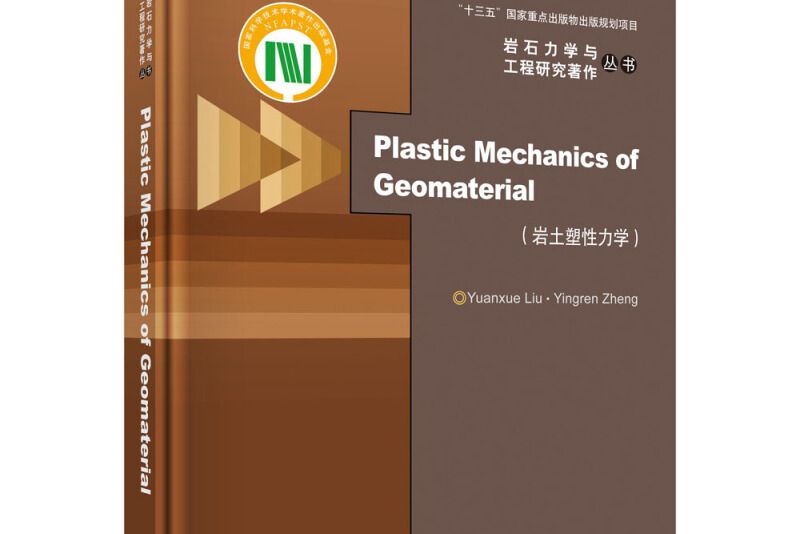內容簡介
本書是作者關於岩土塑性力學長期教學與科研工作成果的凝聚。力圖深入淺出的闡述岩土塑性基本概念、靜動力基本力學特性、非線性與經典塑性理論、岩土屈服面理論、硬化模型、流動法則與加卸載準則、主應力軸旋轉計算理論,以及岩土極限分析及其*新進展-極限有限元法。較為詳細地介紹了代表性的岩土靜動力本構模型。期冀讀者能對岩土基本力學特性與本構模型有深入系統的認識,可以針對具體工程問題與岩土特性,選用與建立合理本構模型。
圖書目錄
Contents
1 Introduction 1
1.1 BasicConcept 1
1.1.1 Plastic Deformation 1
1.1.2 Plastic Mechanics 2
1.1.3 Plastic Mechanics of Geomaterial 3
1.2 The Basic Hypothesis of Plastic Mechanics of Geomaterial 4
1.3 The Constitutive Model 4
1.3.1 What Is Model 4
1.3.2 Model in Classical Soil Mechanics 5
1.4 Development History for Plastic Mechanics of Geomaterial 6
References 8
2 Stress and Strain and Its Basic Equations 11
2.1 Continuum Model 11
2.2 Stress Tensor 12
2.3 Decomposition of Stress Tensor and Its Invariants 15
2.3.1 Decomposition of Stress Tensor 15
2.3.20 ther Representation of Stress Invariant 16
2.4 Deformation and Strain 19
2.5 The Invariant of Strain Tensor 22
2.6 Decomposition of Strain Tensor and Its Invariants 23
2.6.1 Decomposition of Strain Tensor 23
2.6.20 ther Representation of Strain Invariant 24
2.7 Stress Path and Strain Path 27
2.7.1 Expression of Stress Path 27
2.7.2 The Realization of Stress Path 29
2.7.3 Total Stress Path and Effective Stress Path 29
2.7.4 Strain Path 30
2.8 Basic Equations of Plastic Mechanics of Geomaterial 30
2.8.1 Basic Equations 31
2.8.2 Boundary Condition and Initial Value 33
References 34
3 The Basic Mechanical Characteristics of the Geomaterial 35
3.1 Pressure-Hardening 35
3.2 Yield Caused by Hydrostatic Pressure 36
3.3 Dilatancy 37
3.4 Plastic Deformation Dependent on Stress Path 39
3.50 ther Important Characteristics 41
3.6 Mechanical Characteristic at Small Strain of Geomaterial 43
3.7 Mechanical Difference for the Natural and Remoulded Soil 45
References 47
4 The Elastic Model of Geomaterial 49
4.1 Nonlinear Elastic Theory 51
4.1.1 Variable Elasticity Theory 51
4.1.2 Hyperelastic Theory 51
4.1.3 Hypoelastic Theory 52
4.2 The Anisotropic Elastic Theory 52
4.2.1 Isotropic Elastic Constitutive Model 54
4.2.2 The Elastic Constitutive Model with Cross-Anisotropy 57
4.3 The Isotropic Nonlinear Elastic Model of Geomaterial 57
4.3.1 The Basic Principle of Duncan-Chang Model 58
4.3.2 Two Elastic Function of Duncan-Chang Model 59
4.3.3 Review of Duncan-Chang Model 63
4.4 The Elastic Model with Transverse Isotropy 64
4.4.1 Xiao-nan Gong Model 64
4.4.2 Graham Model 65
References 71
5 Classical Plastic Theory 73
5.1 Potential Function and Thermodynamics 73
5.1.1 First Law of Thermodynamics 73
5.1.2 Second Law of Thermodynamics 74
5.1.3 Thermodynamics Potential and Dissipative Inequality 75
5.2 Plastic Postulate 78
5.2.1 Drucker's Stability Postulate 78
5.2.2 Inference of Drucker's Postulate 79
5.3 The Constitutive Model Based on the Classic Plastic Theory 82
5.3.1 The Framework of the Classic Plastic Theory 82
5.3.2 Commonly Used Models 83
References 86
6 The Development of the Plastic Theory of Geomaterial 87
6.1 Study of Several Basic Problems in Plastic Theory of Geomaterial 87
6.1.1 Proving that Drucker Postulate Is Unsuitable for Geomaterial 88
6.1.2 Proving that the Classic Plastic Theory Is Unsuitable for Geomaterial 91
6.1.3 Study of Several Key Problems in the Plastic Theory of Geomaterial 93
6.2 Development of the Yield Surface for Geomaterial 97
6.2.1 Significance of Yield Surface 97
6.2.2 Yield of Geomaterial 97
6.2.3 The Shear Yield Surface 98
6.2.4 Volumetric Yield Criterion 106
6.2.5 Yield Surface of Overconsolidated Soil 114
6.2.6 Part Yield 116
6.3 Hardening Laws 117
6.3.1 Hardening Theory 117
6.3.2 Hardening Model 118
6.3.3 Isotropic Hardening 119
6.3.4 Kinematic Hardening 121
6.3.5 Mixed Hardening 124
6.3.6 The General Form of Hardening Model 125
6.4 Plastic Flow Rule 128
6.4.1 Associated Flow Rule 129
6.4.2 Nonassociated Flow Rule 129
6.4.3 Mixed Flow Rule 129
6.5 Loading-Unloading Rule 131
6.5.1 Loading-Unloading Rule Based on Yield Surface 131
6.5.2 Loading-Unloading Rule with Stress Type 132
6.5.3 Loading-Unloading Rule with Strain Style 132
References 134
7 The Static Elastoplastic Model for Geomaterial 137
7.1 Cam-Clay and Modified Cam-Clay Model 138
7.1.1 The Concept of Critical States 138
7.1.2 Cam-Clay Model 139
7.1.3 Modified Cam-Clay Model 144
7.1.4 Comment on Cam-Clay Model 145
7.2 Lade Model 146
7.2.1 Components of Constitutive Model 146
7.2.2 Elastic Behavior 146
7.2.3 Failure Criterion 147
7.2.4 Plastic Potential and Flow Rule 148
7.2.5 Yield Criterion and Work-Hardening/Softening Relation 150
7.2.6 Determination of Material Parameters 153
7.2.7 Model Comments 160
7.3 A Unified Hardening Constitutive Model for Soils 161
7.3.1 Introduction 161
7.3.2 The Unified Hardening Parameter Which Has Nothing to Do with the Stress Path 162
7.3.3 Unified Hardening Model for Natural Consolidation
7.3.4 The Unified Hardening Model of the Normal
Consolidated Soil 170
7.3.5 The Stress-Strain Relationship 175

